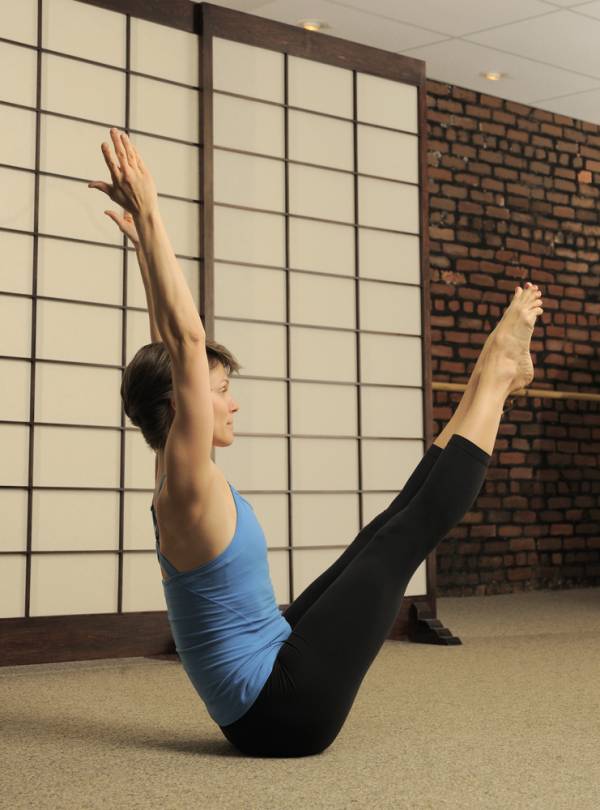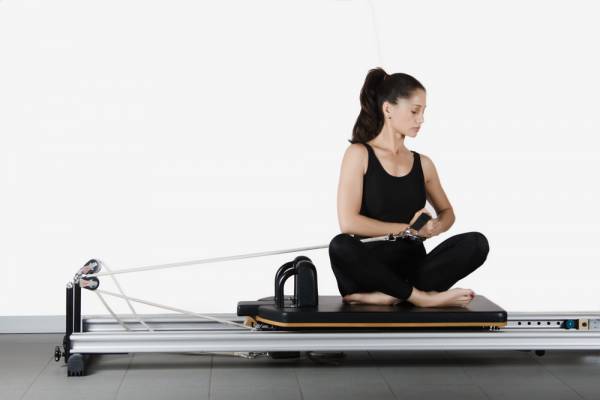I recently came across an article published in the USA Today entitled At the Core – Pilates Is Popular, But It Requires Concentration. The article promoted Pilates as an effective means for weight loss and body re-sculpting. Sadly, it was replete with the typical mainstream verbiage and drivel that has no proven research base. Yet another example of the pseudo-experts creating their own facts to support enjoyable, but worthless means to a better physique.
I decided to use this article as an opportunity to help others apply critical analysis to this kind of material. To best explain the issues that arose for me and help you analyze future articles you encounter on fitness methodologies, I’m going to share some excerpts from it (in italics) and follow each with my thoughts.
“The workouts are based on the teachings of the late Joseph Pilates, whose fitness method focuses attention on strengthening core posture muscles and deep breathing.”
Pilates is core posture muscle strengthening and deep breathing. What are the “core” posture muscles and the rationale for the deep-breathing focus? A solid presentation would offer the physiological details, or at least a general goal of them.
“If the workout is a good one, then all of the exercises are based on the fundamental principles of Pilates, which are centering, control, breathing, fluid movement, form, concentration.”
Pilates now incorporates more than just core posture and deep breathing? Is it some type of relaxation technique due to the emphasis on “centering” and “control?” Centering what? Controlling what? What are fluid movement, form, and concentration?
“If you do the workouts about three times a week for an hour each time, your waistline will probably be trimmer because there is a lot of abdominal work.”
This implies doing abdominal work reduces body fat. Spot reduction is impossible and we’ve known that for years. An hour per workout, three times per week, focusing on core/posture muscles? This is unnecessary. An hour (or less) devoted to higher-calorie burning activities (i.e., interval or circuit training) and addressing the “core” with basic strength training exercises would be more productive. To decrease body fat, a calorie deficit must be created. The addition of high-calorie burning exercise (which Pilates is not) is a better option for probably becoming trimmer.
“Pilates also focuses on the muscles around your joints – especially hips and shoulders, where you work to refine smaller muscles in those areas.”
 Are shoulders now considered part of the “core?” Where do you draw the line for the “core” muscles? What specific joints and muscles are targeted in Pilates? I am left curious how a Pilates’ routine trumps a conventional resistance training routine that addresses joint strength and stability, augments flexibility, and burns more calories than Pilates.
Are shoulders now considered part of the “core?” Where do you draw the line for the “core” muscles? What specific joints and muscles are targeted in Pilates? I am left curious how a Pilates’ routine trumps a conventional resistance training routine that addresses joint strength and stability, augments flexibility, and burns more calories than Pilates.
“It balances the muscle system so that no one muscle group is stronger than the other. You prevent injury because there is nothing pulling adversely on the skeletal frame because of muscular imbalance.”
A balance of joint strength and stability (agonist/antagonist) is also the goal of any properly designed strength training program. Working joint flexion and extension, adduction and abduction, inward rotation and outward rotation – all of this contributes to joint stability and balanced strength. This can be accomplished using conventional strength training exercises that activate more muscle through a variety of safe ranges of motions.
“The workouts should help you do many activities with more energy and efficiency – playing golf, running, cycling, walking, or sitting at your desk.”
How is Pilates specific to those activities? Motor learning principles clearly state that no transfer occurs between dissimilar activities. Exact replication or movement practice (specificity of motor skill work) is needed for positive results to occur.
Regarding energy – how does Pilates increase more energy? Involving larger muscles (i.e., running or on-your-feet exercises) is more demanding on the body. This uses more energy and can better create a cardiovascular overload that ultimately leads to better conditioning, and thus one possessing more energy.
“Pilates creates an immense amount of body awareness, which is beneficial whether you’re sitting at your desk all day or you’re a serious athlete.”
Awareness in terms of what: standing, sitting, moving a specific way, where my left arm is, or where my right ear lobe is? I am missing an explanation of the science here. How does this help a serious athlete who is already focused on their sport-skill work, strategy development, strength training, energy-specific conditioning training, and attention to proper nutritional intake?
“It’s exactly what people who are tighter should be doing because it will help elongate their muscles.”
Simply extending any joint to its complete range of motion will “elongate” the muscle(s) acting at that joint. Any further “elongation” will require surgical intervention to alter muscle and/or tendon insertions and origins. You cannot alter your genetic endowment. Conventional static-stretching exercises will also help people within the confines of their inherent skeletal structure.
 “Doing movements incorporating Pilates principles will give you a supple, youthful spine, and long, lean muscles.”
“Doing movements incorporating Pilates principles will give you a supple, youthful spine, and long, lean muscles.”
Regarding “long, lean muscles,” taller, longer-limbed humans (ectomorphs) have longer limbs and longer muscles as compared to shorter-limbed humans (mesomorphs) who have naturally shorter muscle bellies. One cannot change that.
“If you are doing an exercise without activating the correct muscles, you could injure yourself or end up not getting the results you want – a great toned body.”
It is implied that Pilates gives you a “great toned body” provided one activates the correct muscles. I wish it were that simple. Obviously, one’s given (and unalterable) body type, energy expenditure, exercise habits, and nutritional intake play a huge factor in obtaining a “toned” body as opposed to simply using Pilates techniques.
On the subject of “tone,” it is mainly a marketing term with little scientific merit. In reality, one cannot tone his/her body. One can alter body composition in terms of fat and muscle composition to enhance muscle visibility. However, to suggest that doing Pilates three times per week for one hour will give one a “great toned body” – and not considering body type, energy expenditure, exercise regimen, and nutritional habits – is totally irresponsible.
After reading this entire article with an analytical mindset, here is my summary. Pilates may serve a purpose in strengthening abdominal, lumbar, and associated muscle groups, but it is a poor choice for those attempting to maximally burn body fat and become more muscular. Fat spot reduction is impossible and Pilates by itself is not an efficient means of burning calories and building muscle. If these are in fact your goals, your time would be better spent performing total body strength training (including abs and low-back) and high-calorie burning exercise such as interval training or high intensity circuit workouts.
Next time you see an article promoting any particular fitness trend or methodology, take a moment to read it critically. Let your mind question the material and see where it leads you.
Photos courtesy of Shutterstock.






